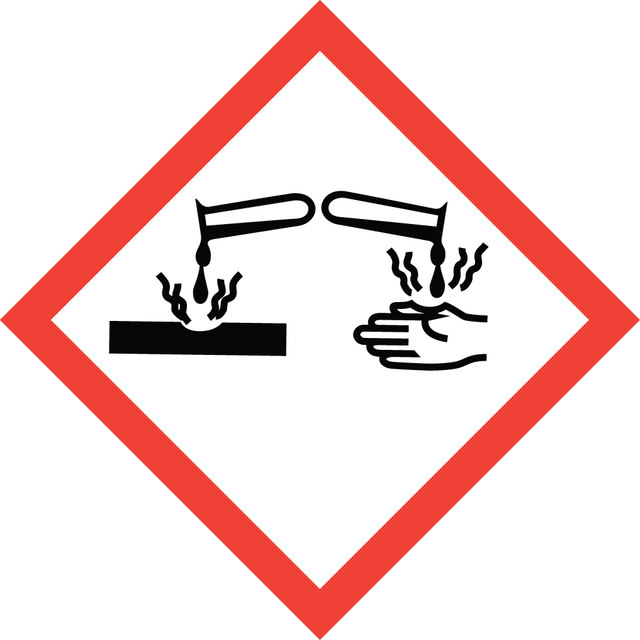129526
2-Isopropylphenol
98%
Sign Into View Organizational & Contract Pricing
Select a Size
About This Item
Linear Formula:
(CH3)2CHC6H4OH
CAS Number:
Molecular Weight:
136.19
Beilstein:
1363322
EC Number:
MDL number:
UNSPSC Code:
12352100
PubChem Substance ID:
NACRES:
NA.22
vapor pressure
<0.05 mmHg ( 25 °C)
Quality Level
Assay
98%
refractive index
n20/D 1.526 (lit.)
bp
212-213 °C (lit.)
mp
12-16 °C (lit.)
density
1.012 g/mL at 25 °C (lit.)
SMILES string
CC(C)c1ccccc1O
InChI
1S/C9H12O/c1-7(2)8-5-3-4-6-9(8)10/h3-7,10H,1-2H3
InChI key
CRBJBYGJVIBWIY-UHFFFAOYSA-N
Gene Information
human ... GABRA1(2554)
Looking for similar products? Visit Product Comparison Guide
Related Categories
General description
2-Isopropylphenol is catabolized via a broad-spectrum meta cleavage pathway.
Application
2-Isopropylphenol was used to study the ability of 2-isopropylphenol to activate estrogen receptor (ER), androgen receptor (AR), progesterone receptor (PR) and estrogen-related receptor (ERR).
Signal Word
Danger
Hazard Statements
Precautionary Statements
Hazard Classifications
Acute Tox. 4 Oral - Eye Dam. 1 - Skin Corr. 1B
Storage Class Code
8A - Combustible corrosive hazardous materials
WGK
WGK 3
Flash Point(F)
224.6 °F - closed cup
Flash Point(C)
107 °C - closed cup
Personal Protective Equipment
dust mask type N95 (US), Eyeshields, Gloves
Choose from one of the most recent versions:
Already Own This Product?
Find documentation for the products that you have recently purchased in the Document Library.
Jian Li et al.
Toxicology in vitro : an international journal published in association with BIBRA, 24(1), 201-207 (2009-09-22)
Some phenols have been suspected to modulate the endocrine systems of wildlife and humans, but less is known about their interactions with different types of nuclear receptors. In this study, the ability of 2-tert-butylphenol, 2-isopropylphenol, 4-tert-octylphenol (4-t-OP), 2,4-dichlorophenol (2,4-DCP), 3,4-dichlorophenol
F Reichlin et al.
Applied and environmental microbiology, 60(12), 4587-4591 (1994-12-01)
Pseudomonas sp. strain HBP1 Prp grew on 2-isopropylphenol as the sole carbon and energy source with a maximal specific growth rate of 0.14 h-1 and transient accumulation of isobutyric acid. Oxygen uptake experiments with resting cells and enzyme assays with
Martin Barann et al.
Anesthesia and analgesia, 106(3), 846-857 (2008-02-23)
5-Hydroxytryptamine type 3 (5-HT3) receptors are excitatory ligand-gated ion channels which are involved in postoperative nausea and vomiting. They are depressed by the anesthetic propofol, which, in contrast, enhances the activity of inhibitory ligand-gated ion channels such as gamma-aminobutyric acid
Yongnian Ni et al.
Talanta, 76(3), 513-521 (2008-07-01)
The binding interaction of the pesticide Isoprocarb and its degradation product, sodium 2-isopropylphenate, with bovine serum albumin (BSA) was studied by spectrofluorimetry under simulated physiological conditions. Both Isoprocarb and sodium 2-isopropylphenate quenched the intrinsic fluorescence of BSA. This quenching proceeded
Kevin A Harvey et al.
Bioorganic & medicinal chemistry, 18(5), 1866-1874 (2010-02-16)
The present study describes the characterization and evaluation of novel anticancer conjugates, 2,6-diisopropylphenol-docosahexaenoate (PP-DHA), and its analogues including 2,4-diisopropylphenol-docosahexaenoate (DIPP-DHA), 2-isopropylphenol-docosahexaenoate (IPP-DHA), 2-cyclohexanephenol-docosahexaenoate (CHP-DHA) and phenol-docosahexaenoate (P-DHA) on breast cancer cell lines. Representative breast cancer cell lines, based on estrogen
Our team of scientists has experience in all areas of research including Life Science, Material Science, Chemical Synthesis, Chromatography, Analytical and many others.
Contact Technical Service
